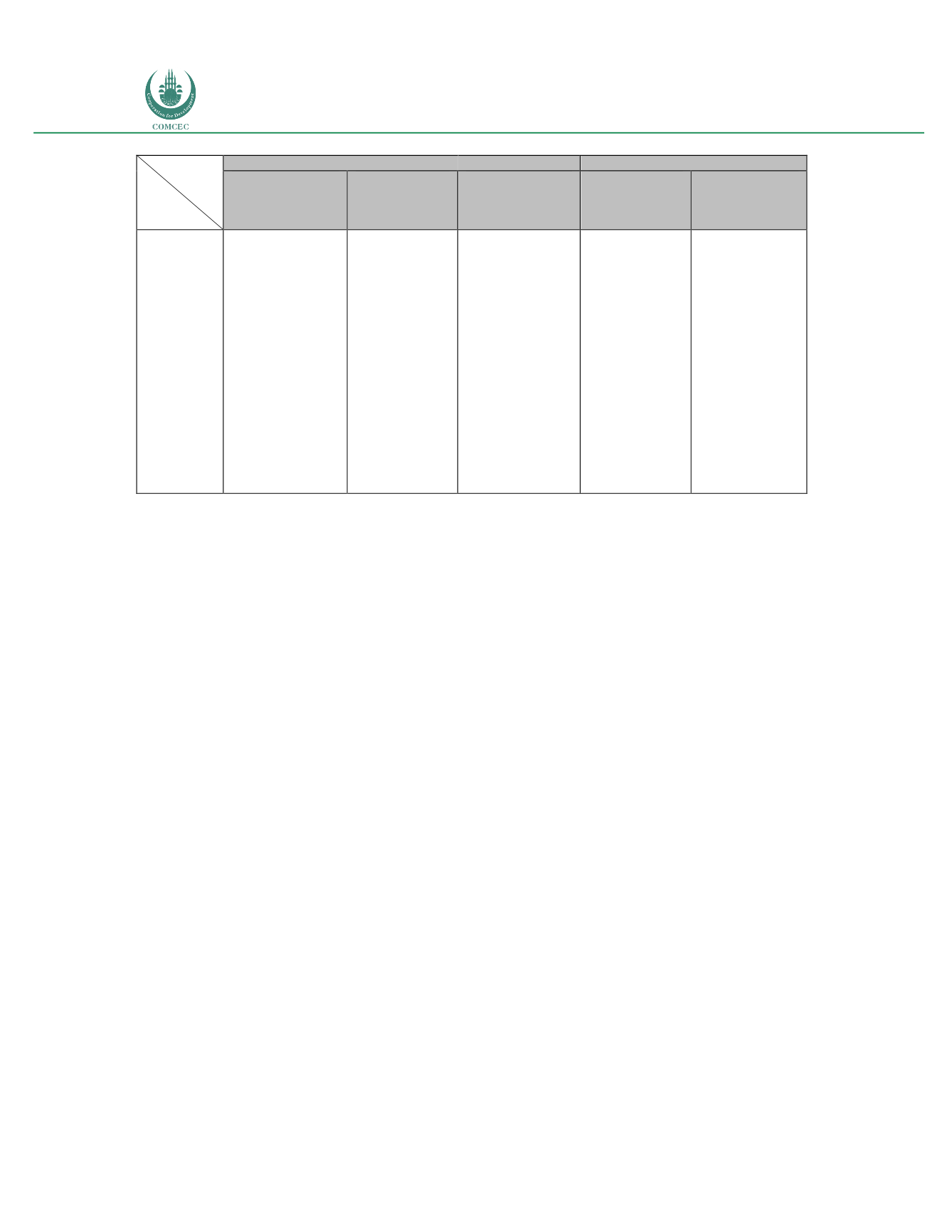

Increasing Broadband Internet Penetration
In the OIC Member Countries
156
Supply
Demand
Fixed Broadband
Coverage (ADSL)
Mobile
Broadband
Coverage (3G)
Mobile
Broadband
Coverage (4G)
Fixed
Broadband
Penetration
(households)
Mobile
Broadband
Penetration
(population)
Kyrgyzstan, Mali,
Mauritania,
Morocco,
Mozambique, Niger,
Nigeria, Sierra
Leone, Somalia,
Syria, Sudan,
Tajikistan, Togo,
Tunisia,
Turkmenistan,
Uganda,
Uzbekistan, Yemen
Kyrgyzstan, Mali,
Mauritania,
Mozambique,
Niger, Nigeria,
Sierra Leone,
Somalia, Syria,
Sudan, Tajikistan,
Togo, Tunisia,
Turkmenistan,
Uganda,
Uzbekistan, Yemen
Iraq, Jordan,
Kuwait,
Kyrgyzstan,
Libya, Mali,
Mauritania,
Morocco,
Mozambique,
Niger, Nigeria,
Pakistan,
Senegal, Sierra
Leone, Somalia,
Sudan, Syria,
Tajikistan, Togo,
Tunisia,
Turkmenistan,
Uganda,
Uzbekistan,
Yemen
Mozambique,
Niger, Nigeria,
Pakistan, Senegal,
Sierra Leone,
Somalia, Sudan,
Syria, Tajikistan,
Togo,
Turkmenistan,
Uganda,
Uzbekistan,
Yemen
Source: Telecom Advisory Services analysis
In general trends, some OIC Member Countries in the Middle East (Bahrain, Oman, Qatar, Saudi
Arabia, UAE) and Central Asia (Azerbaijan, Kazakhstan) tend to be advanced in terms of supply
and penetration of broadband services. At the opposite end, a large group of African countries
(Benin, Burkina Faso, Cameroon, Chad, Guinea, Senegal, Sierra Leone, Sudan, Togo) are still at a
limited stage of broadband development both in terms of supply and demand. Finally, a
number of countries in North Africa (Egypt, Tunisia, Morocco), Sub-Saharan Africa (Cote
d’Ivoire), Middle East (Kuwait) and Asia (Brunei, Kyrgyzstan, Turkey, Uzbekistan) exhibit
advanced coverage of the population combined with low adoption. Broadband policies need to
be defined for each group. The following are structured around the promotion of enhanced
supply and the stimulation of demand. Cognizant that supply and demand stimulation policies
could be implemented in all three country groupings, each group has a dominant imperative:
advanced countries need to focus on policy initiatives that promote next generation broadband
network deployment; countries at an intermediate stage of broadband development need to
focus on demand stimulation policies around digital literacy; finally, countries with limited
broadband development need to emphasize affordability initiatives.
VI.1. Advanced OIC Member Countries
Advanced OIC Member Countries exhibiting high coverage and adoption are facing the
challenge of building a forward-looking world-class infrastructure that will position them in a
leading position in terms of digitization. This entails deploying fiber optics both at the
backbone and last mile level, completing their 4G coverage and preparing to deploy 5G. Supply
related policies for these countries need to recognize that few broadband providers (typically
the incumbents) are capable of tackling these challenges. Along these lines, governments need
to consider policies that represent appropriate incentives to warrant next generation
infrastructure deployment. They typically include tax benefits and regulatory holidays, both
applied on a selective basis.
















